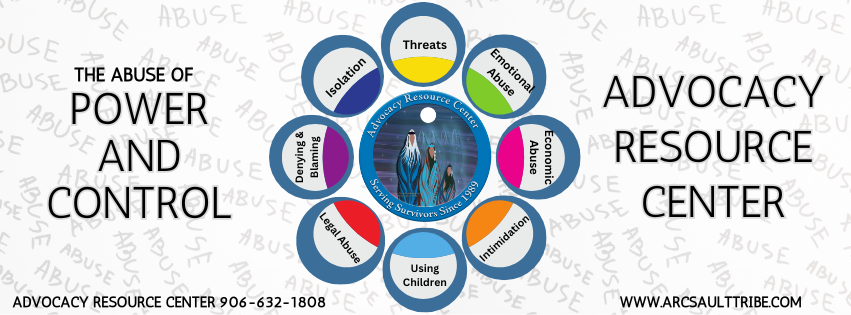March The Abuse of Power and Control

The abuse of power and control in the context of domestic violence involves systematic manipulation to maintain dominance over the victim. The Power and Control Wheel was co-created in the early 1980’s by Dr. Ellen Pence and Michael Paymar, founders of the Domestic Abuse Intervention Project in Duluth, MN, to depict the typical patterns of behavior exhibited by those who exert power and control in abusive relationships. Dr. Pence, along with other social activists, were facilitating men's batterers groups and women's survivor groups, and while speaking with the survivors, they began to notice some patterns. They asked the women what specific tactics their abusers were using against them, and when one woman shared her story, several other women had stories to match. They wrote down the initial core tactics and created a list. Dr. Pence noted that more tactics were used, but they did not aesthetically fit in the wheel she had drawn out.
The wheel consists of different categories of abuse, including emotional, physical, and sexual abuse, as well as intimidation, coercion and threats, isolation, minimizing, denying, blaming, using children, economic abuse, and physical violence. Dr. Pence also noted that although it wasn't precisely the desire to obtain power and control, it was the sense of entitlement of the abuser within the relationship.
Therefore, understanding the Power and Control Wheel helps professionals, victims, and advocates recognize and address these abusive behaviors to break the cycle of domestic violence. The Power and Control Wheel can apply to various forms of abuse, including but not limited to child abuse and neglect, elder abuse, teen dating violence, workplace violence, animal abuse, sex trafficking, medical, police, and LGBTQ abuse.
The wheel can be applied to these different forms of abuse, each with its' own set of specific behaviors. The takeaway is that the abuse of power and control is at the root of abusive behavior. Dissecting the wheel and understanding each form of abuse can help victims recognize the forms of abuse used on them.
Emotional Abuse involves undermining the victim's self-worth and takes a toll on the victim's emotional and mental state. Emotional abuse uses mind games, name-calling, humiliation, or guilt-tripping to establish dominance.
Intimidation includes actions or gestures intended to create fear in the victim. Intimidating behaviors may also include destroying the victim's personal property, displaying weapons, or hurting pets.
Coercion and threats typically involve using force or making harmful promises to hurt the victim or their loved one or using blackmail against the victim. Threats of suicide or reporting the victim to child protective services is another way to create fear in the victim.
Isolation restricts the victim from social interactions, family, and friends as another way to establish the victim's dependence on the abuser. Isolation can cause mental distress, depression, and anxiety. It also eliminates the victim's ability to reach out for help.
Minimizing, Denying, and Blaming shift responsibility and downplay the abuser's actions. Gaslighting makes the victim feel as if they are wrong, overreacting, or crazy for accusations or facts brought upon the abuser.
Using Children as a form of abuse involves manipulation to gain control of the victim. Abusers threaten the victim with not being able to see the children if they separate or even hurt the children if the victim leaves. This creates fear and obedience in the victim.
Economic Abuse is the controlling of the victim's finances or means of obtaining money of their own. This limits the independence of the victim, again creating dependence on the abuser.
Physical Abuse is the most visible form of abuse and is used on the victim as a punishment or to get the victim to comply with the abuser's demands.
Sexual Abuse of a victim can range in a variety of forms, including rape or sexual assault, or other forms of sexual coercion.
Using Male Privilege is using male status to exert power and control by reinforcing old-school gender norms, stereotyping, and defining roles in the relationship. Acting as the master of the home, etc. Recognizing these patterns and behaviors is crucial for intervention and support for a victim of abuse of any kind. Leaving an abusive relationship is not easy, and many do not understand the obstacles victims must face to find their way out.
Power struggles are typical in relationships of every kind, and although everyone has personal power, relationships should have a mutual balance of power for the relationship to be healthy. For more information about the Duluth Model Power and Control Wheel, visit https://www.theduluthmodel.org.
If you feel that you or someone you care about is in an abusive situation, please contact the Advocacy Resource Center at 906-632-1808.